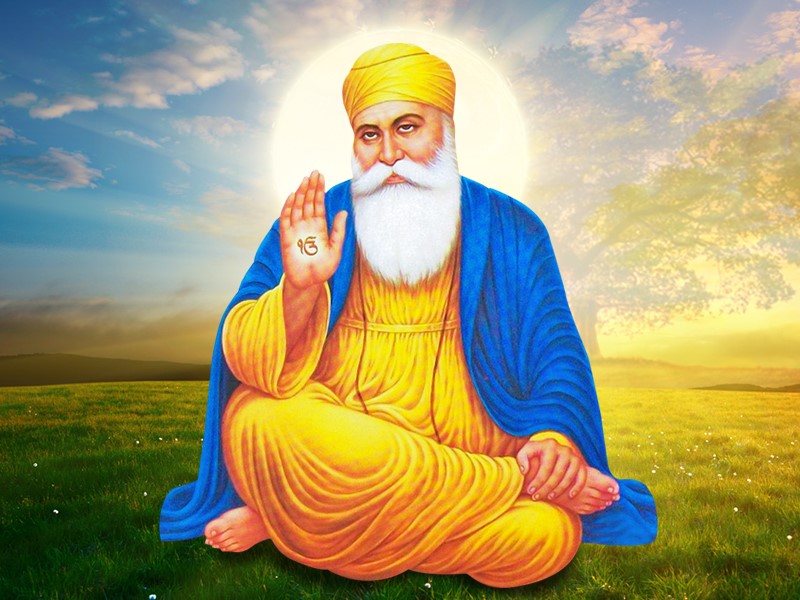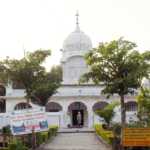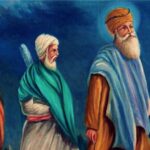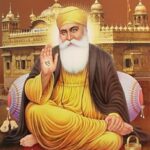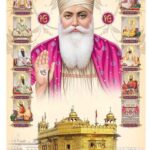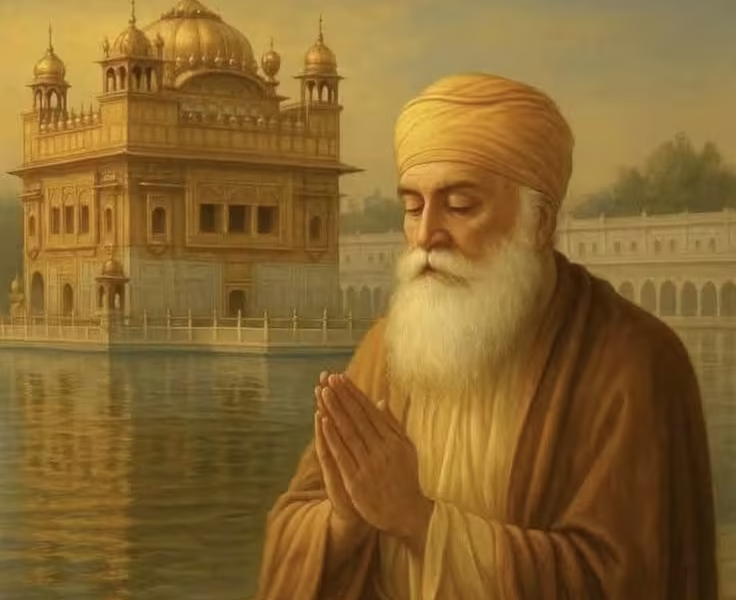Guru Nanak founded Sikhism, one of the world’s newest religions. Guru Nanak was the first Sikh Guru, and his religious precepts set the groundwork for the formation of Sikhism. Guru Nanak, regarded as a religious pioneer, travelled throughout South Asia and the Middle East to promote his teachings. He preached the presence of a single God and encouraged his disciples that via meditation and other religious activities, any human being could approach God. Surprisingly, Guru Nanak opposed monasticism and advised his disciples to live an honest householder’s life. His principles were preserved in the form of 974 hymns that became renowned as the ‘Guru Granth Sahib,’ Sikhism’s sacred scripture.
Through his preaching, Guru Nanak Ji established Sikhism, one of the world’s youngest religions. Without accepting monasticism, the religion emphasises the significance of living a spiritual life. It advises its adherents on how to break free from common human qualities including lust, wrath, greed, connection, and conceit (together called the “Five Thieves”). Sikhism is a monotheistic faith based on the belief that God is formless, eternal, and impenetrable. The notions of worldly deception (Maya), Karma, and salvation are also taught. Meditation and recital of Gurbani, the Gurus’ hymns, are two of Sikhism’s most important activities. The faith also promotes fairness and equality and encourages its adherents to help others.
Teachings of Guru Nanak Dev ji
Guru Nanak preached that everyone can achieve spiritual completeness, which will eventually bring them to God. He also stated that there are no ceremonies or priests needed to have direct contact with God. Guru Nanak emphasised in his preaching that God made countless worlds as well as life. Guru Nanak instructed his disciples to chant the name of God to feel Divine intervention (Nam Japna). He also encouraged them to live a spiritual life by helping others and being truthful.
Guru Nanak’s teaching took place at a time when numerous religions were at odds. People began fighting one other in the centre of God and religion because mankind had become enamoured with pride and arrogance. As a result, Guru Nanak began his lectures by declaring that neither Hindus nor Muslims exists. Exists mean that God is one and that various faiths merely see Him in different ways. Although not planned, Guru Nanak’s teachings did lead to the unification of Hindus and Muslims to some extent. He also underlined the significance of human equality. Slavery and racial prejudice were rejected by him, and he stated that everyone is equal.
Guru Nanak is amongst the most influential religious figures in India who has aided female empowerment. Guru Nanak urged his disciples to treat women with respect and consider them as equals. He claimed that a man is always connected to women and that there will be no existence on Earth without them. He also revived trust in God by stating that the Creator is actively interested in what man is attempting to do on this planet. While other mainstream religions, notably Hindu and Buddhist sects, promoted monasticism to obtain paradise, Guru Nanak created a religion that supported the normal householder’s livelihood.
Most significantly, he advised his followers how to find redemption while still living a good life in civilization. Heed the value of spending time with one’s family. He was not just a teacher, but also a real example of his beliefs. When Guru Nanak went to the celestial dwelling, he left behind nine other Gurus who continued to disseminate his message.
Death of Guru Nanak Dev ji
During his lifetime, Guru Nanak’s great spiritual nature, preaching, and compassion for mankind made him immensely popular amongst Hindu, Sikh, and Muslim populations. After travelling far and wide with his mission, he spent his final days in Karatpur, a holy spot. Hindus, Sikhs, and Muslims all hailed him as their prophet and held him in great regard. When the devotees learned that their teacher was about to pass away, there was a tussle between Hindus, Sikhs, and Muslims over who would claim his body for the burial rites. The Muslims wished to bury the dead according to their customs, while the Hindus and Sikhs thought it was more suitable to cremate him according to theirs.
The master had stated that after his death, those followers whose flowers had not faded would have the right and honour to dispose of his mortal body according to their customs. Guru Nanak instructed the people to recite the Sohila and Japji Sahib prayers. Next to the prayer service, he requested that people bring a covering to cover his entire body and leave the area until the following morning. The Guru imparted his divine light to his disciple Guru Angad Dev at his final breath.
On the morning of September 22, 1539 AD, worshipers from all three groups returned.
When the sheet wrapped around his body was lifted, they were astounded to discover that no sign of Guru Nanak Dev Ji’s physical body existed, and his mortal coils had disappeared entirely. Only fresh flowers had been planted by all of them. Additionally, all three groups’ flowers stayed fresher than before.
In honour of the Divine Master, Hindus, Sikhs, and Muslims chose to construct two different memorials. Thus, two shrines were established on the banks of the River Ravi in Kartarpur, which is now a part of modern-day Pakistan, one by Hindus and one by Sikhs abandoned handy Muslims.
